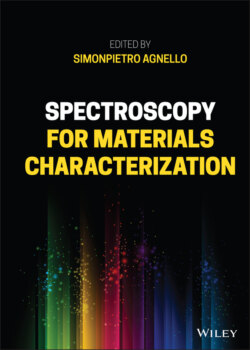Читать книгу Spectroscopy for Materials Characterization - Группа авторов - Страница 61
3.4 Ultrafast Fluorescence Spectroscopies
ОглавлениеAnother group of powerful ultrafast spectroscopic techniques are the fluorescence‐based techniques, such as fluorescence upconversion (FLUC) and Kerr gating‐based time‐resolved fluorescence. Both of them are time‐resolved electronic spectroscopic techniques capable of selectively detecting the (spontaneous) emission, typically with 50–200 fs time resolution, without any GSB or ESA contaminations. Because these methods are only sensitive to excited state dynamics, the signals they produce are much easier to interpret than TA; at the same time, some information remains hidden, such as ground state dynamics, or the population of non‐emissive states. For example, only fluorescent (singlet) excited states are usually measurable with these methods. In contrast, most (but not all) triplet excited states remain “dark” because their phosphorescence has too low a radiative rate to provide a detectable signal.
Both FLUC and Kerr gating experiments require the use of two pulses (called excitation and gate) and the possibility of changing the time delay between them. The excitation pulse directly interacts with the sample, initiating the fluorescence emission. Then, the gate pulse controls the temporal window in which the emitted fluorescence is sampled with femtosecond time resolution. In both cases, varying the delay between excitation and gate allows to follow the dynamics of the fluorescence. However, the two techniques achieve time resolution through the use of two different nonlinear optical effects. A FLUC experiment exploits SFG between the gate beam and the fluorescence, in order to sample the fluorescence signal within a time window defined by the cross‐correlation between the excitation and the gate. The Kerr‐gated ultrafast fluorescence is founded instead on the optical Kerr effect, i.e. on the modifications of refractive index of a medium induced by the exposure to a femtosecond pulse. A Kerr medium is used as an optical shutter activated by the gate beam, to select a temporal “slice” of the fluorescence signal to be measured. Details on the technical aspects of the two spectroscopies are given in the next subsections.
